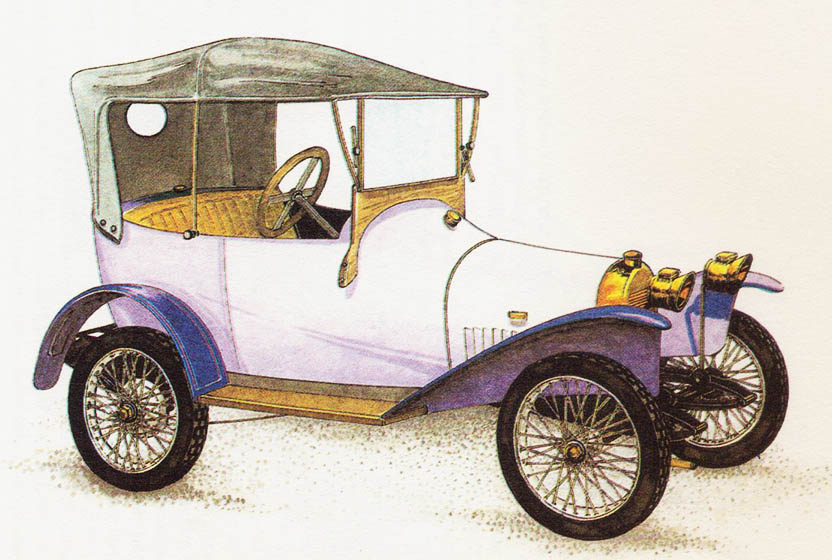PEUGEOT BABY – year 1913
Manufacturer: Peugeot Automobiles SA, Sochaux, France
Using fashion for the small, light cars, Peugeot built a new model - 6 PS type Bebe. It first appeared in 1901 r. Cyclocar with a curb weight of only 270 kg did not even have a reverse gear. The apt name Bebe - toddler was kept for other small Peugeot models.
In the model 6 PS type Bebe w 1 905 r. shock absorbers were used for the first time - an invention patented by Armand Peugeot. The car had a water-cooled single-cylinder 4-stroke engine with a displacement 695 cm3, developing power 4,5 kW (6 KM) by 1000 RPM. Power was transmitted to the rigid rear axle via a conical clutch with a leather lining, gearbox and drive shaft. A wooden body was attached to the tubular steel chassis. The curb weight of the vehicle did not exceed 550 kg.

W 1912 r. a new variant of the Bebe model was released. This time, the construction was entrusted to the little-known E. let's bugger. The four-cylinder engine had cylinders in diameter 55 mm and piston stroke 90 mm lined up in a row. At the displacement 856 cc had power 7,3 kW (10 KM); the mass was 330 kg. The drive was transmitted from the engine by a two-speed gearbox. Reverse gear was engaged with a separate lever. The car was reaching maximum speed 60 km/h. The rigid front axle was suspended on longitudinal semi-elliptical leaf springs, stiff rear axle with inverted quarter-elliptical springs. The biggest problem was the tires, which wear out quickly and it's over 10 000 km they had to be changed. Another deficiency was the inaccurate steering of the wheels. Despite these disadvantages, the production of the Bebe model continued until 1916 r., and in total it was produced in 3095 copies. The Bebe type has been replaced by the Ouadrilette, which in terms of construction was a continuation of the previous one.